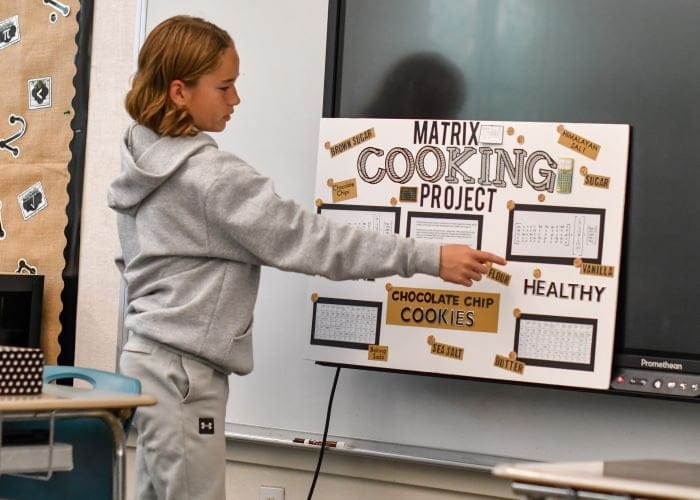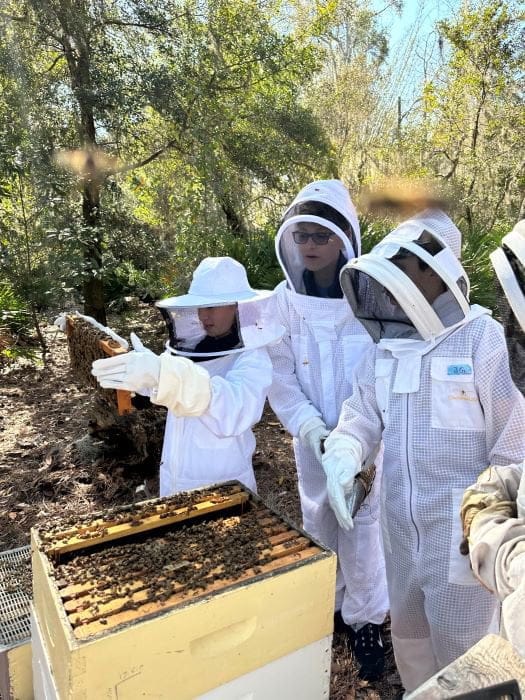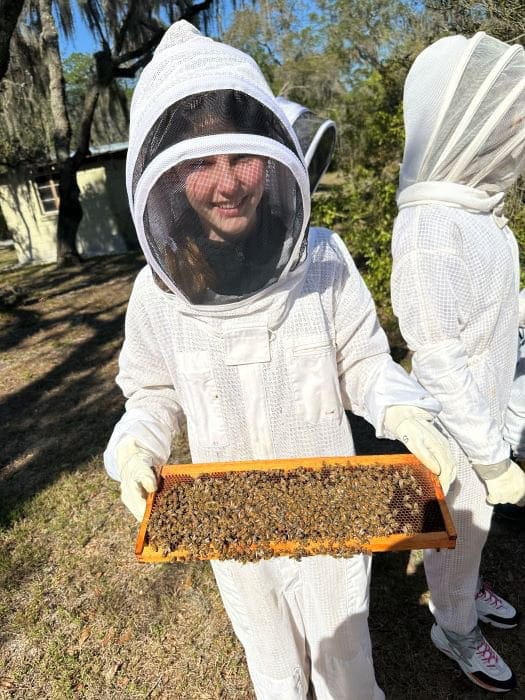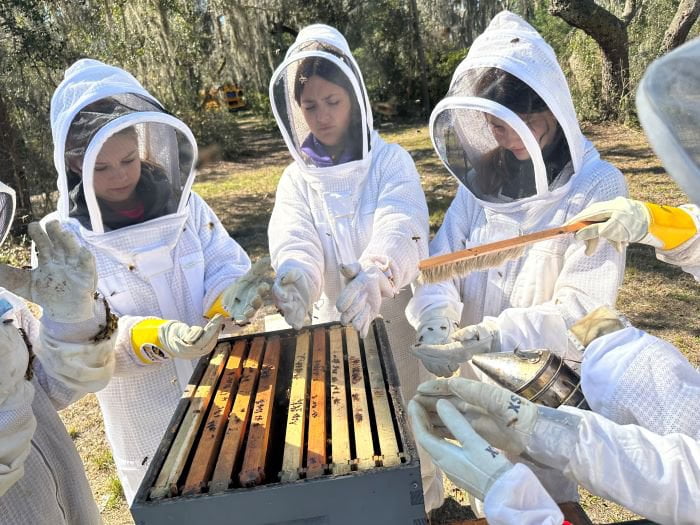Finding Math in Unusual Places with Corbett Prep’s 8th Grade Class
The eighth graders zipped their white coveralls and peered at their surroundings through veils. Math class was about to begin.
The students in Corbett Prep’s Advanced Math Topics class exchanged their desks for a bee farm that would serve as their classroom for this day. The words “problems” and “calculations” would come later; for now, the students concentrated on learning about and caring for honeybee colonies.
Math today looks different from how parents may remember it. At Corbett Prep, students learn to go beyond rote memorization and everyday word problems. Teachers prioritize developing conceptual understanding that will help them more in the future than the ability to achieve a high score on a worksheet.
When math lessons only scratch the surface and rely on students memorizing gimmicks, tips and tricks to solve problems, students struggle to transfer their knowledge to other contexts, according to a study from the Organization for Economic Cooperation and Development. The students who have a broader understanding of the concepts behind what they are learning can think and reason mathematically to find answers even when faced with unfamiliar situations.
Math influences many aspects of daily life, from recipes to beekeeping, and teacher Telma Largent strives to point out the connections as she shares her passion for the subject. Experiential learning opportunities help bring these concepts to life.

In Corbett Prep’s Advanced Math Topics class, students got a taste of matrices—normally introduced in 10th grade Algebra 2—by researching the nutritional content of individual ingredients and entering the data into a matrix to figure out the nutritional value of an entire recipe. Then they replaced some of the ingredients with healthier options and created a new matrix to compare the nutritional value of the original recipe with the revised one. They shared their findings and the food they baked during a class potluck.
The trip the same class took to the bee farm posed more open-ended questions where students had to think about what mathematical concepts they needed to know to solve problems. First, they got to know the bees, pulling racks to watch them in action, identifying the queen, appreciating honeycomb’s natural hexagons and sampling fresh honey. They’ll share their knowledge with a prekindergarten class that is studying food and farming, which strengthens connections within the school.

After the farm visit, the students discussed the mathematical concepts that could help a bee farmer. What would they need to know to calculate the future size of the bee population in the hives? Could algebra help them predict the outcome of different breeding strategies or could they use a mathematical formula for the amount of sugar water needed to feed the bees to help them survive the winter? How could a beekeeper use algebra to calculate profit margins or make economic decisions?
At times, the questions even stump the teacher.
“Some of the questions that I ask my students, I initially don’t know the answers myself,” Largent says. “I am comfortable to share with them that I do not know the answer to a question. I model to them how not to be intimidated about not knowing something and to actually be excited about not knowing.”
The knowledge the eighth graders gain from studying functions, matrices and other advanced math topics serves them well as they move to higher-level high school classes. But experiencing math outside of the classroom can open students’ minds, help them understand math conceptually and learn to apply the concepts to real-world scenarios.

*Presented by Corbett Prep | Originally published in the May 2024 issue of Tampa Bay Parenting Magazine.


